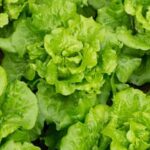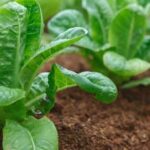Are you interested in getting started with gardening? Look no further than “Gardening 101 Vegetables” for all the tips and information you need to begin your journey into the world of vegetable gardening.
Whether you have a green thumb or are a complete novice, this article will provide you with essential insights into why vegetable gardening is a great hobby for beginners. With the right knowledge and techniques, you can enjoy growing your own fresh and delicious produce right in your backyard.
Gardening 101 Vegetables offers valuable guidance on choosing the perfect location for your vegetable garden, selecting the best vegetables for beginners, and understanding soil preparation and fertilization. You’ll also learn about planting and spacing vegetables for optimal growth, essential watering and maintenance tips to keep your garden thriving, as well as how to deal with common pests and diseases that may affect your vegetable plants.
The satisfaction of harvesting and enjoying the fruits of your labor is an incredibly rewarding experience. This article also provides expert tips on maximizing vegetable yield and flavor so that you can make the most of your efforts. By the end of this read, you’ll be well-equipped with all the necessary knowledge to kick-start your very own successful gardening journey. So let’s get our hands dirty and start planting.
Choosing the Right Location for Your Vegetable Garden
When it comes to starting a vegetable garden, one of the most important decisions you will make is choosing the right location for your garden. The success of your garden largely depends on this crucial decision, as different vegetables have different sunlight and soil requirements. Here are some key factors to consider when choosing the perfect location for your vegetable garden:
1. Sunlight: Most vegetables need at least 6 hours of direct sunlight per day to thrive. When selecting a location for your garden, look for a spot that receives ample sunlight throughout the day. Observe the area at different times to ensure it meets the sunlight requirement for growing healthy vegetables.
2. Soil quality: The soil in your chosen location should be well-draining and rich in organic matter. Conduct a soil test to determine its pH level and nutrient content. Certain vegetables thrive in slightly acidic soil, while others prefer neutral or alkaline soil. Amend the soil as needed to create an optimal growing environment for your chosen vegetables.
3. Accessibility: Consider how accessible the location is for watering, weeding, and harvesting. It’s best to choose a spot that is easily reachable from your house with a water source nearby.
By considering these factors when choosing the right location for your vegetable garden, you can set yourself up for a successful gardening experience and bountiful harvests of fresh, flavorful produce.
Remember that properly siting your vegetable patch could make all of these step easier in the long run. So spend some time upfront finding just the right spot-it’s worth it.
Selecting the Best Vegetables for Beginners
When starting a vegetable garden, it’s important to choose the right vegetables that are easy to grow and maintain, especially for beginners. Here are some of the best vegetables for beginners to consider planting in their gardens:
- Tomatoes: These are one of the most popular and easy-to-grow vegetables for beginners. They can be grown in containers or in the ground, and they thrive in warm, sunny locations.
- Radishes: Radishes are fast-growing vegetables that can be ready for harvest in as little as three weeks. They are perfect for beginner gardeners who want to see results quickly.
- Zucchini: Zucchini plants are prolific growers, producing an abundance of squash throughout the growing season. They’re relatively low-maintenance and perfect for beginners.
- Green Beans: Green beans are another great option for beginner gardeners. They’re easy to grow, produce high yields, and can be grown either bush-style or on trellises.
In addition to these options, other easy-to-grow vegetables for beginners include lettuce, cucumbers, peppers, and carrots. When selecting vegetables for your first garden, it’s important to consider your local climate and growing conditions.
Remember that starting with a few varieties of easy-to-grow vegetables will allow you to build skills and confidence in gardening before expanding to more challenging crops. With proper care and attention, you can enjoy a bountiful harvest of fresh, homegrown produce from your vegetable garden.
Whether you have limited space or ample room for gardening, these vegetable options cater to different settings while offering a rewarding experience for gardening enthusiasts looking to dip their toes into this enriching hobby.
Understanding Soil Preparation and Fertilization for Successful Vegetable Gardening
One of the key factors in successful vegetable gardening is having the right soil and proper fertilization. Before planting your vegetables, it’s important to ensure that the soil is well-prepared and enriched with the necessary nutrients for optimal plant growth. This can make a significant difference in the health and yield of your vegetable garden.
The first step in soil preparation is testing the pH levels of your soil. Most vegetables thrive in soil with a pH level between 6.0 and 7.0. You can easily test your soil using a pH testing kit available at most gardening stores. If the pH level is too low, you can add lime to raise it, or if it’s too high, you can add sulfur to lower it.
In addition to pH levels, it’s essential to ensure that the soil is well-drained and loose to allow for proper root development. Adding organic matter such as compost, well-rotted manure, or peat moss can improve soil structure and fertility. Furthermore, incorporating balanced fertilizer into the soil before planting will provide essential nutrients that may be lacking for healthy vegetable growth.
| Soil Preparation Factors | Key Considerations |
|---|---|
| pH Levels | 0 – 7.0 is ideal for most vegetables |
| Soil Structure | Well-drained and loose for root development |
| Fertilizer | Incorporate balanced fertilizer before planting |
Planting and Spacing Vegetables for Optimal Growth
When it comes to vegetable gardening, planting and spacing your vegetables properly is essential for optimal growth. Proper planting and spacing ensure that your plants have enough room to thrive, access to sunlight, and proper air circulation. Here are some key factors to consider when it comes to planting and spacing your vegetables in your garden.
Planting Guidelines
When it comes to planting your vegetables, it’s important to follow the guidelines provided on the seed packets or plant labels. This will typically include information on how deep to plant the seeds or transplant the seedlings, as well as how far apart they should be spaced. Following these guidelines will help ensure that your plants have enough space to grow without competing for resources.
Companion Planting
Another important aspect of planting vegetables is considering companion planting. Some vegetables thrive when planted alongside certain others, while others can inhibit each other’s growth. For example, planting carrots with onions can help deter carrot flies, while marigolds can help repel pests when planted among other vegetables. Learning about companion planting can help you make the most out of your garden space and create a natural pest control system.
Vertical Gardening
For those with limited garden space, vertical gardening is a great option for maximizing space and yield. Certain vegetables like tomatoes, cucumbers, and beans can be trained to grow vertically using trellises or cages. By growing upwards rather than outwards, you can save valuable ground space while still enjoying a bountiful harvest.
By taking these factors into consideration when planting and spacing your vegetables, you can set yourself up for success in your gardening endeavors and enjoy a plentiful harvest of fresh produce throughout the growing season.
Essential Watering and Maintenance Tips for Vegetable Gardens
When it comes to successful vegetable gardening, watering and maintenance are crucial aspects that can make or break your harvest. Proper care for your plants will ensure healthy growth and bountiful yields. In this section, we will discuss some essential watering and maintenance tips for your vegetable garden.
Watering Tips
One of the most important factors in vegetable gardening is ensuring that your plants receive the right amount of water. Overwatering can lead to root rot, while underwatering can cause stunted growth and poor yields. It’s important to water your vegetables deeply, ensuring that the water reaches the roots. The best time to water is in the early morning or late afternoon, as this allows the water to be absorbed before it evaporates in the heat of the day.
Maintenance Tips
In addition to proper watering, regular maintenance is essential for a thriving vegetable garden. This includes pruning tomato plants to encourage better fruit production, removing weeds that compete for nutrients, and keeping an eye out for any signs of disease or pest infestations. Regularly inspecting your plants and addressing any issues promptly can prevent problems from spreading and damaging your entire garden.
Fertilization
Fertilizing your vegetable garden is also an important aspect of maintenance. Choose a fertilizer specifically formulated for vegetables and follow the instructions carefully to avoid over-fertilization, which can harm your plants. Regular fertilization will provide essential nutrients that promote healthy growth and abundant harvests.
By following these essential watering and maintenance tips, you can ensure a thriving vegetable garden that provides you with an abundance of fresh produce throughout the growing season.
Dealing With Common Vegetable Garden Pests and Diseases
One of the biggest challenges that beginner gardeners face is dealing with common pests and diseases that can affect their vegetable gardens. Some of the most common pests include aphids, caterpillars, and beetles, while diseases like powdery mildew and blight can also wreak havoc on your plants. It’s important to be proactive in preventing these issues, as they can quickly escalate and lead to poor yields or even complete crop failure.
Integrated pest management (IPM) is a recommended approach to dealing with garden pests. This strategy involves using a combination of methods such as hand-picking pests off plants, using natural predators, and applying organic pesticides when necessary. Additionally, practicing good gardening hygiene by regularly removing diseased plants and maintaining proper spacing between crops can help prevent the spread of diseases.
Another effective way to prevent pest infestations and diseases is by rotating your crops each year. This means planting different types of vegetables in different parts of your garden to disrupt the life cycles of pests and pathogens. By implementing these proactive measures, you can minimize the impact of pests and diseases on your vegetable garden.
| Common Garden Pests | Preventative Measures |
|---|---|
| Aphids | Use insecticidal soap or apply a strong blast of water to dislodge them from plants. |
| Powdery Mildew | Avoid watering foliage, improve air circulation around plants, and use fungicidal sprays if necessary. |
| Caterpillars | Handpick them off plants or use floating row covers to protect crops. |
By being vigilant in monitoring your vegetable garden for signs of pests and diseases, you can take early action to address any issues that arise. With a proactive approach and the right knowledge, you can effectively manage common problems and enjoy a successful harvest from your vegetable garden.
Harvesting and Enjoying the Fruits of Your Labor
As you have learned throughout this guide to vegetable gardening for beginners, there is a lot that goes into successfully growing your own vegetables. From choosing the right location and selecting the best vegetables for beginners to understanding soil preparation, planting, watering, and dealing with pests, you are now well-equipped to start your own gardening 101 vegetables project.
After all the hard work of tending to your vegetable garden, it’s finally time to enjoy the fruits of your labor. To ensure maximum vegetable yield and flavor, it’s essential to harvest your vegetables at the right time. Be sure to follow the specific harvesting guidelines for each type of vegetable you have planted. Some vegetables are best when picked early, while others should be left on the plant longer for optimal flavor.
Once harvested, it’s important to store your vegetables properly to maintain their freshness and flavor. Proper storage will also prevent spoilage and waste. Consider learning how to can or preserve excess produce so that you can enjoy your homegrown vegetables throughout the year. Overall, vegetable gardening is a rewarding hobby that allows you to savor the satisfaction of producing your own food and enjoying delicious, fresh produce straight from your garden.
Frequently Asked Questions
What Are the Basics of Vegetable Gardening?
The basics of vegetable gardening involve choosing the right location with plenty of sunlight, preparing the soil, selecting the right vegetables to grow, planting at the appropriate time, watering and fertilizing properly, and regular maintenance such as weeding and pest control.
What Vegetables Should I Garden for Beginners?
For beginners, it’s best to start with easy-to-grow vegetables such as tomatoes, peppers, lettuce, carrots, radishes, and zucchini. These vegetables are relatively low-maintenance and have a good chance of success for those new to gardening.
What Is a Good Layout for a Vegetable Garden?
A good layout for a vegetable garden involves organizing plants in rows or raised beds to maximize space and ease of access. Consider companion planting to maximize space utilization and deter pests naturally. Arrange taller plants at the back or center of the garden to avoid shading smaller crops.

If you’re looking to get into vegetable gardening, or are just looking for some tips on how to make your current garden better, then you’ve come to the right place! My name is Ethel and I have been gardening for years. In this blog, I’m going to share with you some of my best tips on how to create a successful vegetable garden.





